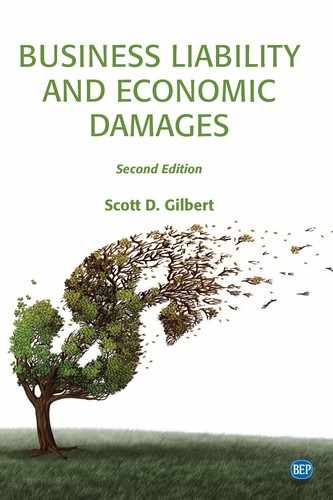If you’ve made it through most of the material in this book, you’ve encountered a fair amount of economic discussion and analysis, some description of legal procedures, and numerous examples, all targeted at understanding economic damages in business liability cases. My guess is you haven’t read a similar book before, not because you aren’t well-read, but because none exists. Scholars of law and economics like to write books on substantive law and its connection with economics,1 but much of what lies in the present book concerns procedural law and the determination of economic damages in a given case. On the other hand, forensic economists like to write books on the calculation of economic damages,2 but the focus is much more technical, with limited discussion of general economic and statistical principles.
My hope is that this book has added fruitfully to the mindset of business owners and managers who deal with business liability. If you’re a lawyer or an economist curious about how economic and statistical principles play out in court settlements, I hope you’ve seen some familiar principles interwoven with unfamiliar ones, with a thought-provoking end result. If you have comments or questions on material in this book, I look forward to hearing from you.3
Despite an ambitious scope, a book of this length could not possibly cover the myriad issues that arise in the connection between business liability and economic damages. This is certainly true of commercial damages, wherein a business causes a wrongful economic loss to another business. The problem of determining commercial damages can become challenging simply due to the sheer scale of the businesses themselves. A case of business interruption, lost profit, or copyright infringement can involve thousands of documents, massive amounts of accounting data, and considerable thought about what economic opportunities might (or might not) have been lost due to the alleged wrongful act. There is a natural tendency for businesses to omit or obscure information in such cases, when disclosure is contrary to their interest, and an economist charged with determining economic damages due to business liability must also determine fact from fiction. Too, existing business and tax records say something about profit, earnings, risk, and so on, but not necessarily in the terms most appropriate for determining economic damages, and this often calls for careful interpretation of evidence. To communicate interpretations of evidence, it’s useful to have a set of economic principles in mind, like those in this book.
1See, for example, the Law & Economics text cited earlier by Cooter and Ulen.
2See, for example, the book Determining Economic Damages cited earlier by Martin.
3The e-mail contact for author Scott Gilbert is [email protected].
